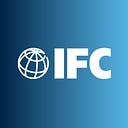By Philippe Le Houérou
This article was originally published on Devex on October 10, 2019.

The World Bank Group has at its core a commitment to improving lives in places that need it the most, especially countries and regions suffering from poverty, conflict, and fragility.
For 59 years, the concessional arm of the World Bank Group — the International Development Association — has offered grants and loans at zero or low interest to governments in the poorest countries. But two years ago, IDA’s shareholders broke new ground with the launch of the IDA private sector window, a $2.5 billion facility aimed to help offset risks and other impediments to private sector investment in the world’s most challenging markets, including those with weak government capacity, inadequate legal frameworks, a lack of capital markets, and limited infrastructure.
The IDA PSW is deployed through four facilities. One is a Local Currency Facility for markets with no or limited currency hedging solutions to eliminate the foreign exchange risk, thereby adding more risk to projects in the poorest countries. Another is a Risk Mitigation Facility to provide project-based guarantees focusing on infrastructure or public-private partnership projects without sovereign backing. Next is a Multilateral Investment Guarantee Agency Guarantee Facility to expand coverage of MIGA guarantees through shared first-loss and risk participation. The last is a Blended Finance Facility to mitigate financial risks by providing loans, equity, and guarantees to pioneering International Finance Corporation investments across sectors with high development impact and positive externalities.
These facilities help to reduce investor risk and help ensure that impactful projects see the light of day. Since its inception, the PSW has supported over 30 projects with $603 million — including innovative investments in the Democratic Republic of the Congo, Haiti, Mozambique, Tajikistan, and other eligible countries.
The PSW is not a giveaway to private companies, but an important de-risking tool that allows private sector investors and lenders like IFC and insurers like MIGA to support projects that would otherwise not happen. The PSW is also not additional capital for IFC. IFC invests its own capital in each PSW-supported project, and like traditional IDA credits, investments supported by the PSW facilities are expected to be repaid to IDA.
The World Bank Group places discipline on “what” and “how” blended finance investments happen. All our blended finance transactions follow the blended finance principles and go through a separate approval process to safeguard the appropriate and efficient use of funds — including ensuring the minimum subsidy necessary to catalyze the investment is used.
As a steward of IDA resources, IDA staff effectively have a veto in this governance mechanism.
Many are closely following the early implementation of the PSW, and we’re committed to listening to our critics and learning and adjusting where needed to improve this pioneering program.
Recently, key stakeholders made the argument that greater transparency regarding the PSW subsidy is needed to ensure accountability with the use of public funds. We completely agree with them.
So far, IFC has systematically disclosed to the public information on the sponsor, structure, expected development impact, instrument, and amount of blended finance for every eligible project. But we can go further.
I believe transparency is critical in ensuring public confidence that we are applying the highest standards in the use of blended finance. So, starting with projects mandated on or after Oct. 1, IFC will publicly disclose the estimated subsidy for each proposed project along with the justification for why it is necessary.
IFC will use this approach for all of its blended finance facilities. And I encourage the rest of the DFI community who are also using blended finance to do the same.
Let’s be clear: blended finance is not a panacea. The development gaps in low-income markets are huge. Investor appetite cannot be stimulated by de-risking efforts at the project level alone. Sector and macro-level policy reforms and good governance are critical to creating markets that will unlock sustainable private sector investment.
But blended finance is an instrument to compensate for some of the many market failures and uncertainties that are stifling private investment in the more challenging places. Though it is early days for the IDA PSW, we already see its great potential to help countries meet their development goals and ultimately to give citizens in poor countries the opportunity to grow businesses, create jobs, purchase homes, and access electricity.
And, as our experience grows with the PSW, we will make adjustments — as we are doing now — to make sure this important tool is fit for purpose, demonstrates value, and achieves impact.
Philippe Le Houérou is CEO of the International Finance Corporation
